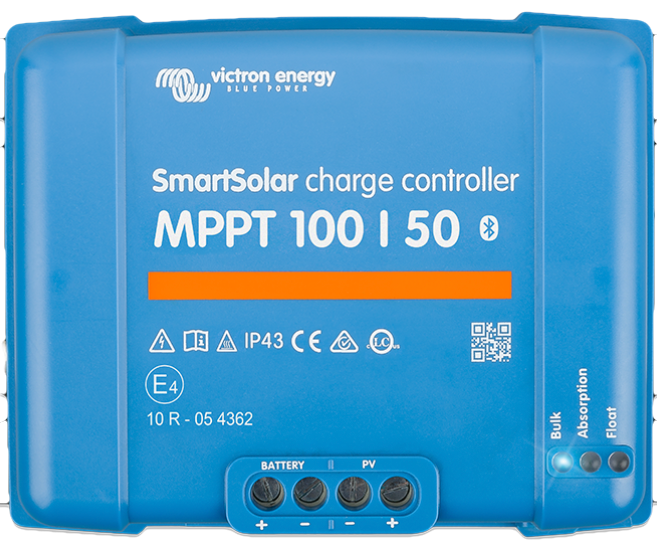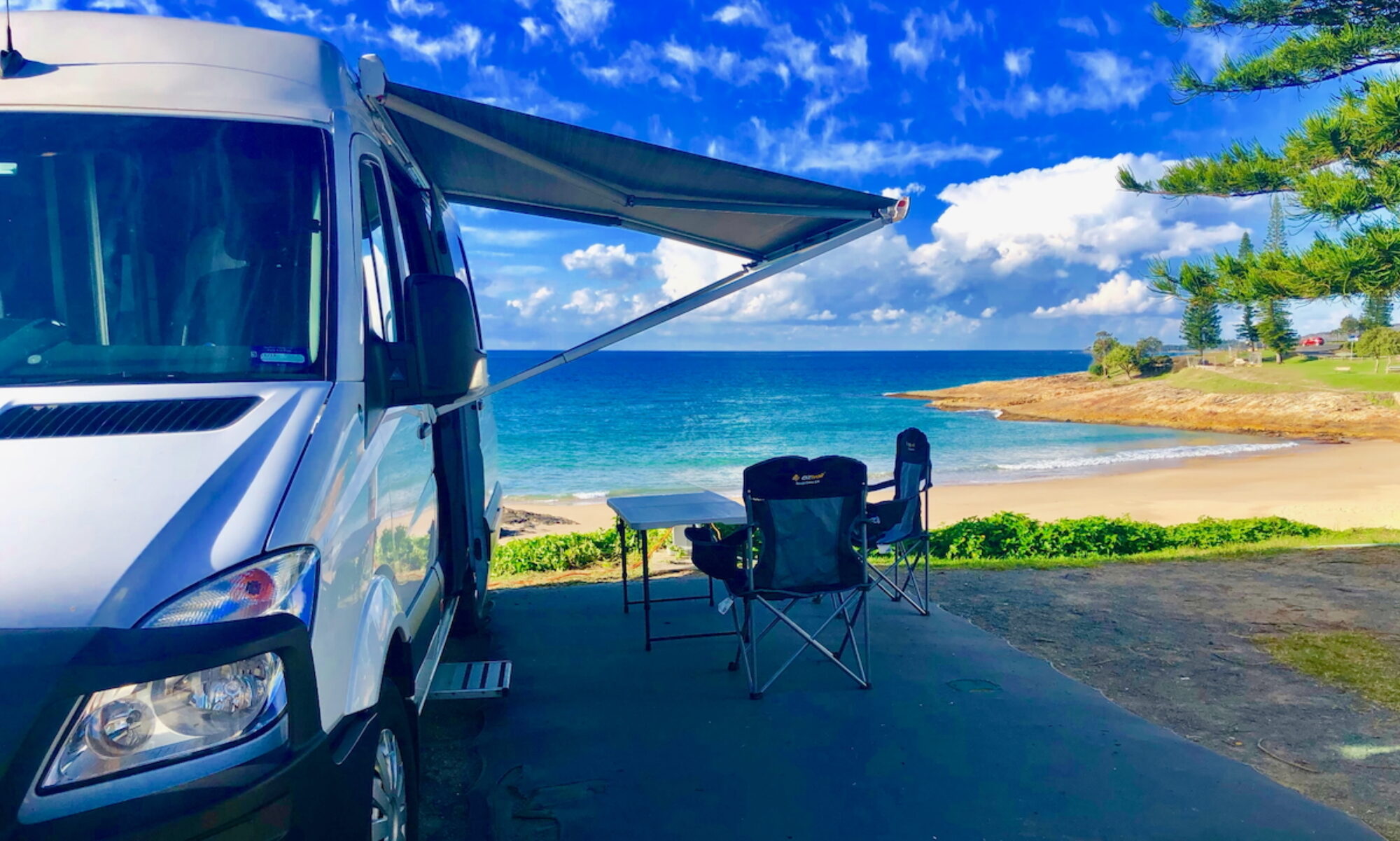Sustainability: Batteries & Solar | Water | Heating
Batteries | Consumption | Battery Recharging | Solar Charging | How Long Without Sun? | Alternate Charging Options | Solar Regulators | The Bottom Line
What is a solar regulator (aka as a solar controller)?
The output from your solar panel is not suitable for feeding directly into your 12V batteries. Solar panels produce electricity at around 18V – 21V, which has to be adjusted and regulated to charge deep-cycle batteries – usually requiring around only 14.6V.

A regulator / controller connected between the solar panel and the batteries ensures that the solar-generated output is compatible with the specified battery input requirements, and that the input current is attenuated as the battery approaches full charge, to avoid overcharging. A regulator also prevents charged batteries ‘draining’ current back to the solar panel.
AGM and Lithium batteries have different charging requirements. Be sure that your solar regulator/ controller is suitable for the chemistry of the battery it is connected to. Having said that, most new MPPT solar controllers are compatible with Lithium and AGM batteries – but check before you buy.
There are two types of solar regulator generally available – PWM and MPPT regulators. Though most new regulators are MPPT. Again, check before you buy.
PWM: Pulse Width Modulation
 PWM regulators are the original regulators designed to adjust a solar panel’s output to suit the requirements of a 12V battery, and to taper the current flowing to the batteries as the batteries approach full charge.
PWM regulators are the original regulators designed to adjust a solar panel’s output to suit the requirements of a 12V battery, and to taper the current flowing to the batteries as the batteries approach full charge.
PWM regulators operate at about 70% efficiency in transferring energy from the solar panel to the batteries. These regulators are often included in budget solar panel ‘packages’ as they are cheaper than MPPT regulators.
MPPT: Maximum Power Point Tracking
 MPPT controllers utilize more recent technology. While providing similar functionality to PWM regulators, MPPT controllers are also able to convert excess voltage from the solar panels into usable current (amps) to charge the batteries. (Most dual-input DC-DC battery chargers include a MPPT regulator for the solar component of the charger.)
MPPT controllers utilize more recent technology. While providing similar functionality to PWM regulators, MPPT controllers are also able to convert excess voltage from the solar panels into usable current (amps) to charge the batteries. (Most dual-input DC-DC battery chargers include a MPPT regulator for the solar component of the charger.)
If you are shopping for a solar regulator, an MPPT regulator is the only one to buy.
Most solar panels produce electric current at around 18V – 21V, while deep cycle Motorhome and Campervan batteries require input around 14.6V to charge. Higher voltages will damage the battery. AGM batteries and LiFePO4 (Lithium) batteries have different voltage charging requirements.
By converting excess panel output voltage (above 14.6V) into usable current (amps) to feed to the batteries, the charging parameters are maintained at an optimal level, and the time required to fully charge the batteries is reduced. These digital smarts allow the solar charging system to operate more efficiently, especially in lower light conditions.
An MPPT controller should be connected at the ‘battery end’ of a cable run from an external panel, rather than at the ‘panel end’ of the cable. This results in less power loss between the panel and the batteries.
The cable conducts the solar-generated electricity at 18V+ from the panel to the regulator. As a result, any power loss over a long cable run occurs before the electricity reaches the regulator, which then adjusts the voltage it receives to 14.6V and converts any excess to usable amps. So the battery receives the required voltage at maximum charging current (amps).
Most modern MPPT regulators are around 93-97% efficient in this voltage/current conversion. You typically get a 20-45% power gain in winter and 10-15% in summer compared to a PWM regulator. Of course, actual gains vary widely depending on weather, temperature, battery state of charge, etc.
Dual-input DC-DC charger
 The PWM and MPPT regulators discussed above are for solar panel input only. Most Campervans and Motorhomes have multiple sources of electrical current to charge their house batteries – rooftop solar panels, portable solar panels / blankets, and the vehicle alternator.
The PWM and MPPT regulators discussed above are for solar panel input only. Most Campervans and Motorhomes have multiple sources of electrical current to charge their house batteries – rooftop solar panels, portable solar panels / blankets, and the vehicle alternator.
The alternator can supply current at a far greater rate than solar panels, when the engine is running.
Solar panels and the alternator both generate DC electrical current, so rather than install a separate charger/regulator for each of the solar panel/s and the vehicle alternator, a single dual-input DC-DC charger can be installed to connect both the solar panel/s and the alternator to regulate and feed charging current to the battery/s.
Many modern alternators generate around 60 amps of output current. The charger regulates the current flowing from the alternator to the batteries to around 25, 40 or 50 amps, depending on the specifications of the charger. Also check your battery specs for the preferred charging rate for your battery/s.
The solar charging component of most modern dual-input DC-DC chargers is built around MPPT technology. Examples: Redarc BCDC 1225, and BCDC 1240, and CTEK D250SE.
Note:
If you are considering the installation of Lithium batteries, make sure that your battery chargers (both DC-DC and AC-DC) have a Lithium charging profile.
See also:
|
Batteries | Consumption | Battery Recharging | Solar Charging | How Long Without Sun? | Alternate Charging Options | Solar Regulators | The Bottom Line
